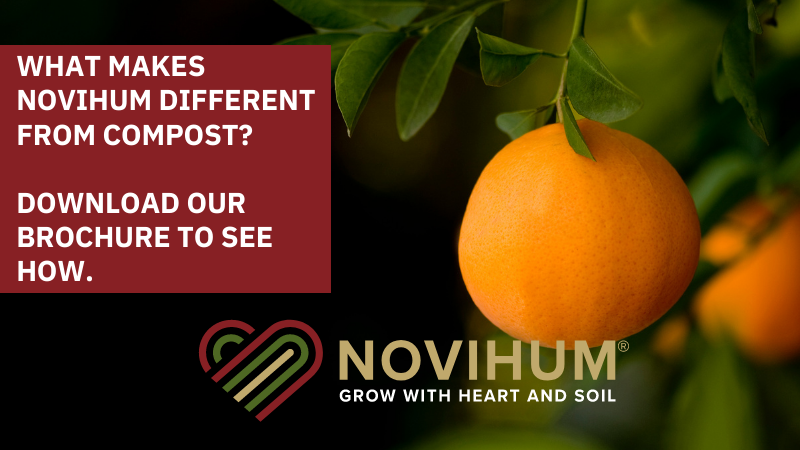Ethylene In Your Storage Room: Should You Be Concerned?
 Handling of fruits and vegetables after harvest generally involves some holding period, even if it is as short as the time to cool or to transport the commodity to market. In some cases, extensive storage periods occur after harvest. The importance of proper temperature management after harvest is well known. Clearly, temperature has the greatest influence on product quality and postharvest life in most cases. However, other factors can be important, including relative humidity (water vapor) and other gases in the atmosphere.
Handling of fruits and vegetables after harvest generally involves some holding period, even if it is as short as the time to cool or to transport the commodity to market. In some cases, extensive storage periods occur after harvest. The importance of proper temperature management after harvest is well known. Clearly, temperature has the greatest influence on product quality and postharvest life in most cases. However, other factors can be important, including relative humidity (water vapor) and other gases in the atmosphere.
If your transportation vehicles or storage rooms accumulate ethylene gas, should you be concerned? Should you spend resources to reduce ethylene concentrations? The answer is that it depends. It depends on the commodity, the temperature, the ethylene concentration, and the exposure time.
Effects Of Ethylene
Ethylene can have both beneficial and negative effects on fruits and vegetables. Ethylene promotes softening which is beneficial when we are ripening fruit, but detrimental when we want to store for long periods and ship long distances. Ethylene can enhance or deteriorate produce flavor.
The effects of ethylene, both beneficial and negative, are reduced at lower temperatures and under modified atmosphere conditions. The effect of temperature on response to ethylene is especially notable with green vegetables. At recommended storage temperatures near 32°F, ethylene-induced yellowing occurs very slowly and would require a long exposure to ethylene to see significant yellowing, likely exceeding the length of storage for most vegetables.
In addition to green vegetables, there are several fruit that are sensitive to damage from ethylene, including Fuyu persimmons, kiwifruit, and watermelon. Kiwifruit are especially sensitive, and their texture can be negatively affected by as little as 0.01 ppm ethylene, even at 32°F.
Ethylene In Cold Storage
During cold storage, the benefits of ethylene scrubbing are mixed. Carlos Crisosto, director of the Postharvest Technology Research and Information Center at the University of California-Davis, and associates investigated the effects of various concentrations of ethylene during cold storage of several types of fruit. Peaches, plums, nectarines, and apricots were stored in 0 to 100 ppm ethylene at 32°F, 41°F, or 50°F for up to 28 days and cherries and table grapes were stored in 0 to 1 ppm ethylene at 32°F and 41°F for up to 60 days.
With only two exceptions, there were no effects on decay development or fruit quality regardless of ethylene exposure. For apricots, ethylene exposure consistently increased fruit softening, and for Elegant Lady peaches, ethylene delayed the development of mealiness in one case. An earlier study in my laboratory with strawberries demonstrated a negative effect of 0.1 ppm ethylene on calyx quality, but no effect on berry quality. Treatment with 1-methylcyclopropene (SmartFresh), which inhibits the effects of ethylene, was able to reverse calyx damage, but had no effect on berry quality.
The benefits of ethylene scrubbing during storage of Bartlett pears have been documented. We studied the effects of 0, 1, 5, or 10 ppm ethylene during three months of storage at 30°F or 34°F on fruit quality. When pears were stored at 30°F, there were no disorders until after three months of storage; however, as little as 1 ppm ethylene did increase the incidence of senescent scald after three months. The incidence of disorders was significantly higher during storage at 34°F, with scald and internal breakdown evident even after only one month of storage without ethylene. Addition of as little as 1 ppm ethylene increased the incidence of senescent scald and internal breakdown.
It was clear that the effect of temperature was significantly greater than that of ethylene, but as little as 1 ppm ethylene had a significant effect at both temperatures. In the case of Bartlett pears, there was no difference in response between 1, 5, and 10 ppm ethylene, indicating that ethylene would need to be scrubbed to concentrations lower than 1 ppm to reduce the negative effects.
Considerations
If you are considering whether to invest in ethylene scrubbing technology for your cold storage facility, transportation vehicle, or packages, it is worthwhile to review published studies to determine the potential to obtain benefits.
In the case of pears, the results with Bartlett pears may not translate directly to other varieties. Also, it may be challenging to scrub ethylene below 1 ppm in commercial pear storage rooms. Additional information about ethylene effects can be found on the Postharvest Technology Center’s website in the Produce Fact sheets for each commodity and under Postharvest Libraries/Postharvest Publications Organized by Topics/Ethylene and 1-MCP.










